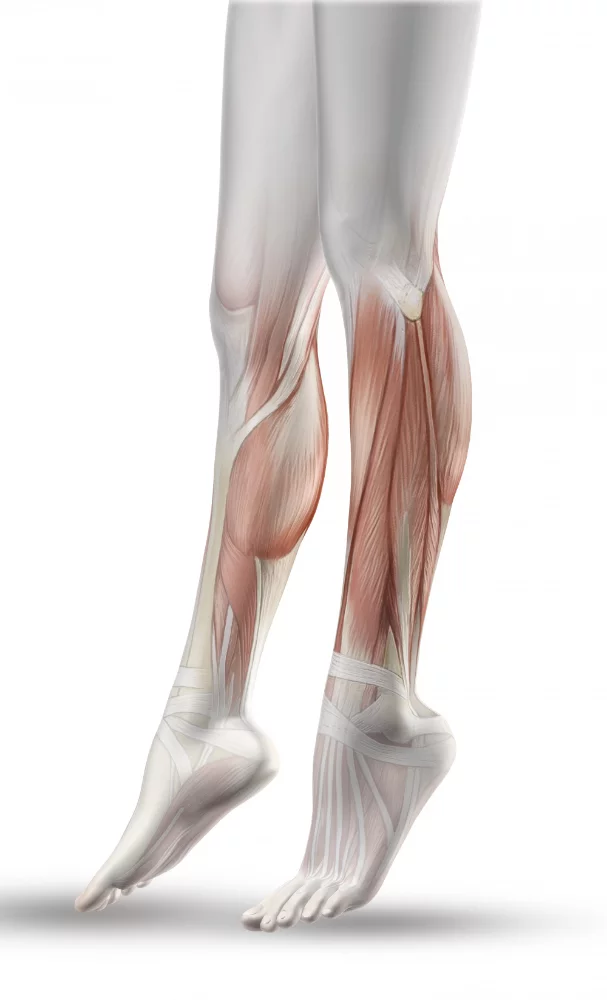If the patient smokes after foot vein occlusion surgery, the first step for the entire treatment is to quit smoking. The patient should be followed up regularly, along with medications such as blood thinners and vasodilators that are recommended to be used after surgery.
Walking is one of the exercises that can prevent or regulate leg pain and can be easily adapted to daily life. Being able to walk at a light and moderate pace for at least half an hour a day will positively affect your health standard.
LEG ARTERY OCCLUSION AND ITS TREATMENT
Leg artery occlusion is called peripheral artery disease. In short, it is a disease caused by the complete or partial blockage of the arteries that provide blood flow to the arms, legs and internal organs due to atherosclerosis (hardening of the arteries).
Atherosclerosis causes peripheral vascular disease in two ways:
- While there should be a rapid increase in the amount of blood and oxygen sent to the tissues in moments when the need for oxygen increases, such as during exercise, atherosclerosis does not allow this increase due to the narrowing in the vessels and symptoms of the disease appear.
- Occlusion of an artery (artery) due to thrombus or embolism (blood clots) causes sudden lack of oxygen and malnutrition in the tissue.
Chest pain during exercise or intermittent leg pain with walking (intermittent claudication) are examples of situations where the increased oxygen and blood needs of the tissue cannot be met. In addition, stroke and heart attack are examples of sudden oxygen deficiency and malnutrition in the tissues due to complete blockage of the arteries by blood clots.
In rare cases, reduced blood flow to the arms or especially the legs as a result of peripheral vascular disease may result in open wounds, ulcers, gangrene or some other damage that is very difficult to heal. These areas do not receive enough blood and are very prone to infection. In advanced cases, amputation (cutting out gangrenous tissue) may be necessary.
% 5 of adults over 50 years of age have peripheral vascular disease. Peripheral vascular disease is more common in men than in women. Known risk factors for peripheral vascular disease are the same as the causes of atherosclerosis (hardening of the arteries). These risk factors are:
- High levels of LDL cholesterol (bad cholesterol) and triglyceride in the blood
- Low levels of HDL cholesterol (good cholesterol) in the blood
- smoking
- Diabetes mellitus
- High blood pressure (hypertension) or a family history of hypertension
- Family history of atherosclerosis (hardening of the arteries)
- chronic kidney failure
- Overweight or obesity
The risk increases even more when risk factors for peripheral vascular disease occur together. An individual with two risk factors is at greater risk than an individual with a single risk factor.
The most common symptoms are intermittent leg pain that occurs with walking (intermittent claudication) and, in more advanced cases, leg pain at rest. The location and severity of the pain vary depending on the location of the blocked vein and the degree of blockage. The most common location for intermittent claudication is where the calf muscles are located (the muscles on the back of the leg below the knee). This pain in the calf muscles only occurs during exercise such as walking or running, and the pain gradually increases as walking or exercise continues. Eventually, the patient becomes unable to tolerate this increasing pain and is forced to stop. The pain then quickly disappears with rest. Intermittent claudication can affect one or both legs.
It occurs when vascular occlusion is very advanced and sufficient blood and oxygen cannot be delivered to the legs even at rest. The pain typically affects the feet and is usually severe. This pain increases especially at night when the patient lies on his back.
Numbness in legs,
Weakness and atrophy (decrease in diameter and strength) in the calf muscles
Feeling cold and cold in the legs and feet,
Color change in the feet (pale when lifted into the air and dark red when lowered)
Hair on the back of the feet begins to fall out and toenails thicken
In advanced cases where there is serious vascular occlusion, painful open wounds (ulcers) may form or gangrene may occur in the feet and legs, especially starting from the toes.
Leg Artery Occlusion Symptoms and Treatment After Diagnosis:
Quitting smoking helps lowering cholesterol and other fat levels in the blood and keeping blood pressure under control.
Keeping diabetes under control, Regular exercise.
Exercise helps the muscles use oxygen more effectively and accelerates the development of collateral circulation (a new vascular network consisting of small artery branches that have developed beyond the blockage).
Blood thinning drugs (e.g. aspirin and clopidogrel), Cholesterol lowering drugs (statins)
Surgical treatment of leg arterial occlusion (Peripheral Bypass)
Surgical treatment methods applied for the treatment of peripheral vascular disease include peripheral bypass procedures and endarterectomy. Today, these are performed even at levels up to the ankle with minimally invasive procedures. Lesions that cause obstruction in the vein, veins with multiple stenoses or long-segmented serious stenoses are conditions that require surgical treatment. Bypass surgery is the provision of blood flow by creating a side path from before to after the obstructed area with a vein or a synthetic vein (known as a graft) taken from your body. In the endarterectomy procedure, the plaque layer causing the obstruction in the vein going to the arms or legs is removed.



